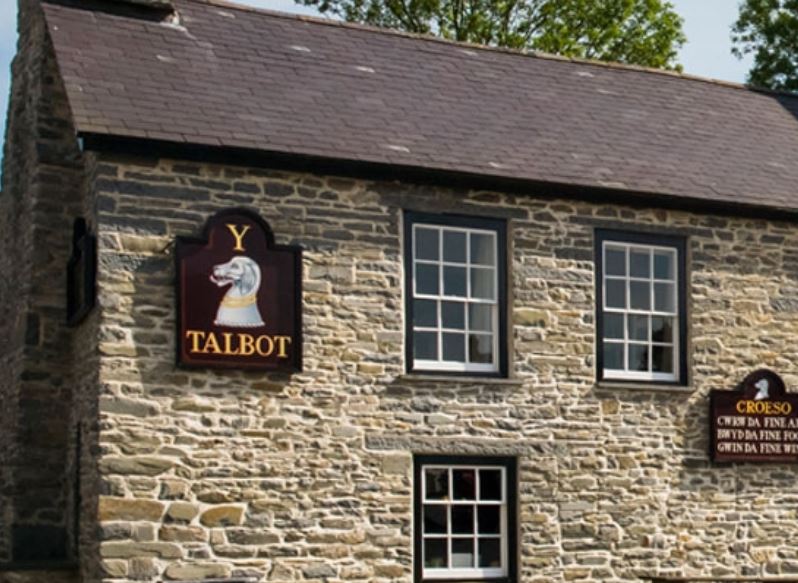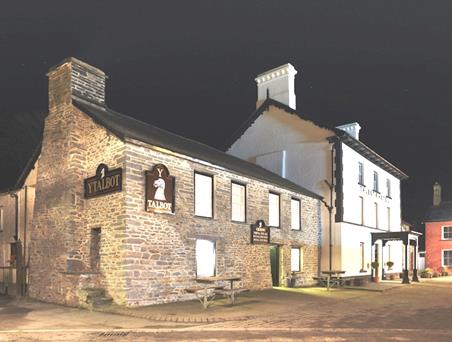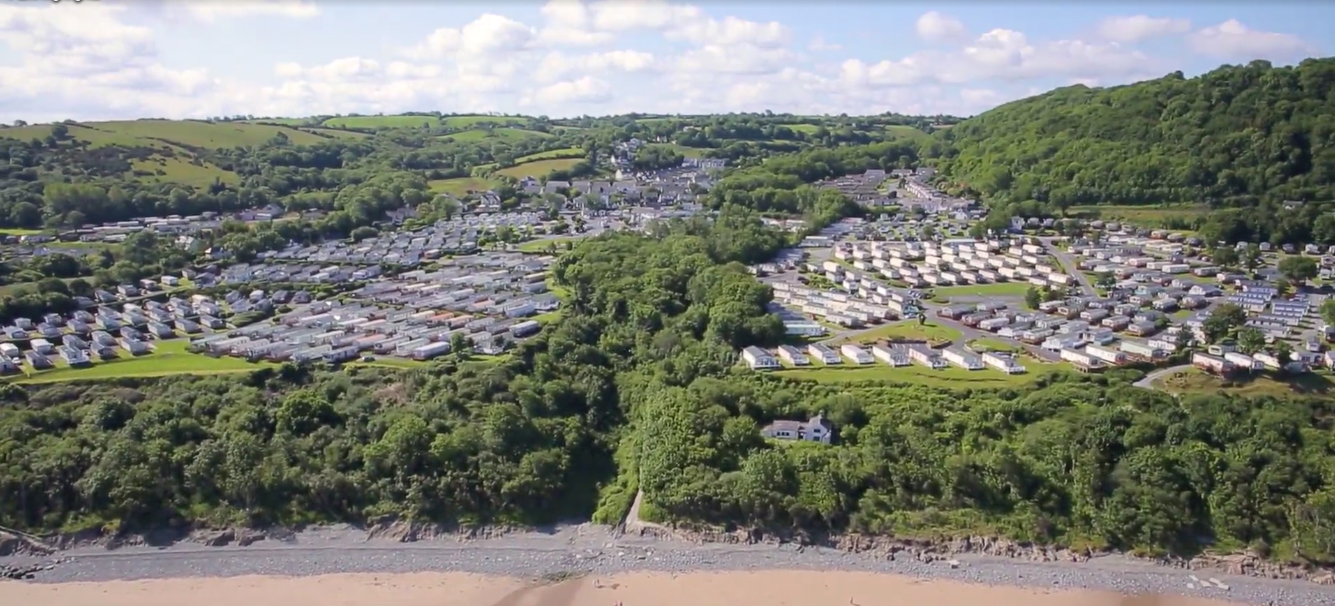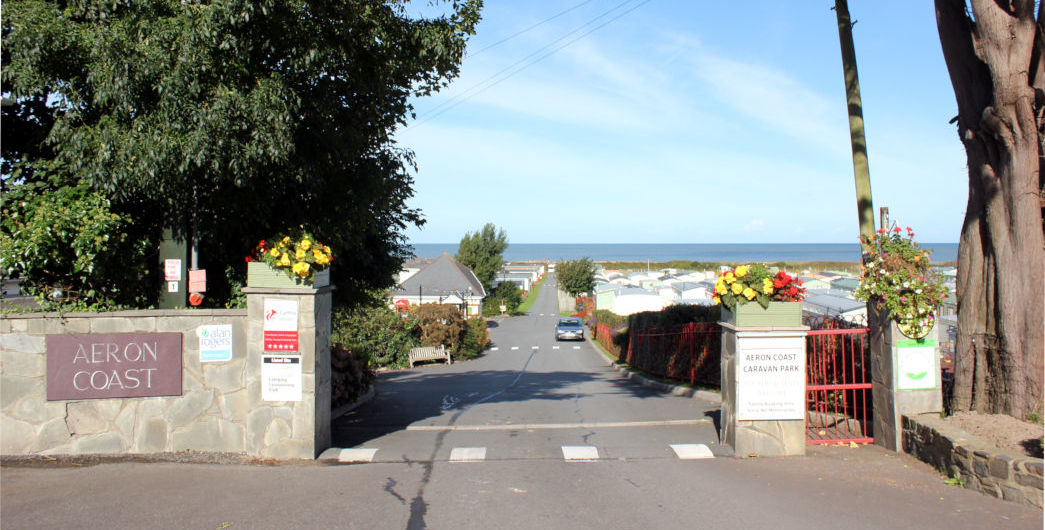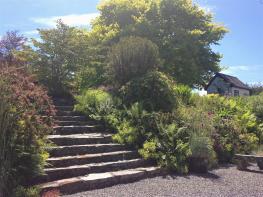This holiday park enjoys a stunning clifftop position overlooking picturesque New Quay and…
New Quay and Cwmtydu

Along the Ceredigion coast between New Quay and Cwmtydu
6.75 miles (10.9kms)
About the walk
Many visitors to West Wales head straight for Pembrokeshire, bypassing the Ceredigion coastline a short distance to the north. They are missing a treat: at its best, the coastal walking in Ceredigion is the equal of anywhere in Wales. The spectacular stretch of coastline to the south of New Quay is a case in point. Here are dramatic cliffs and delightful hidden valleys, fabulous coastal vistas and picturesque coves. This part of Cardigan Bay is also one of the most important wildlife areas on the Welsh coast.
On the high cliffs west of New Quay you will pass a glass-fronted stone hut: the Cardigan Bay Lookout. This former coastguard hut is the perfect place to sit and shelter from the elements on a blustery day and watch the sea. If you are lucky, you may spot a porpoise or one of Cardigan Bay’s semi-resident population of bottlenose dolphins. Over 300 of these majestic creatures are known to frequent the bay, with around 200 present in any year. Numbers increase throughout the summer, peaking in late September and October. Cardigan Bay’s other resident marine mammal is the Atlantic grey seal. You may spot a seal on the rocks or swimming close to shore at any time of year, but the best time to see them is during August, when they haul themselves on to the rocky beaches below the cliffs to calve. The Ceredigion coast is known for its sea caves, which provide a safe and secluded area for the seals to give birth to their young.
It is worth watching the sky as well as the sea. Birds Rock, immediately below the lookout, is the most important seabird colony in Ceredigion and ranked among the top ten sites in Wales. Between March and July, hundreds of guillemots and razorbills nest precariously on the bare ledges, diving for fish in the waters below. In May, they are joined by kittiwakes, a gentle-looking, medium-sized gull that spends much of its time at sea outside the breeding season. Smaller species such as the chough and stonechat can be seen along the cliffs throughout the year.
On the return leg, the walk dips into Cwm Silio, a lovely coastal valley comprising a variety of grassland and broadleaved woodland habitats. In spring, the valley is awash with wild flowers and colourful butterflies. One of the rarest of the latter is the pearl-bordered fritillary, which flies between late April and the end of May. Other interesting insects you may spot include the forester moth, the Welsh chafer (a type of beetle), the giant lacewing and the enormous gold-ringed dragonfly.
Walk directions
Turn right out of the car park to reach a right-hand bend. Bear left into Church Street and then immediately left again into Mason’s Square. Follow the right-hand bend into Water Street and take the next road on the left (Lewis Terrace). Keep ahead to the end of a private road and join the signed coast path to Cwmtydu.
Climb steeply and continue along a clear clifftop path. The path divides to provide an alternative route away from an exposed cliff edge, rejoining near the Cardigan Bay Lookout. Past the lookout, continue along the right-hand edge of fields and drop steeply to a footbridge across a stream.
Keep following coast path signs until you reach a small bay at the mouth of a steep-sided valley (Cwm Silio). Bear right to cross a small river by a footbridge and climb steps to continue round the next headland. There is no one clear path for a while, but keep the sea to the right and you can’t go too wrong.
At a fork above Cwmtydu, leave the coast path by continuing straight ahead. Shortly meet a lane and bear left up the hill. Continue along this lane until you reach a right-hand bend by a house.
Ignore the continuation of the lane to the right (signed to Caerwedros) and turn left on to the dead-end lane to St Tysilio Church. Turn right into the churchyard and follow its right-hand edge downhill to a kissing gate. Join an enclosed path dropping into the steep wooded valley of Cwm Silio.
At the bottom of the valley, turn right to cross the small river by a footbridge. Bear left, then immediately right, to join a wide gravel path away from the river. Cross another footbridge over a smaller stream and keep ahead to a waymark post. Take the path on the right signed to Byrlip.
At the next footpath junction, turn sharply left (again signed to Byrlip) and climb diagonally across the slope of the valley on a grassy path. After a gate, the path becomes enclosed and may be muddy in winter. At Byrlip, bear right between buildings and keep straight up the hill on to a gravel track.
The track levels off after a left-hand bend and runs parallel to the coast. Keep ahead on to a tarmac lane above Coybal and continue to a T-junction with the A486 by the Penrhiwllan Inn. Turn left and follow the road downhill to the car park on the outskirts of New Quay.
Additional information
Well-defined coastal paths and tracks; some lane walking
Rugged cliffs, picturesque coves, secluded coastal valley
Can run free on coast path
OS Explorer 198 Cardigan & New Quay
Large pay-and-display car park on the outskirts of New Quay
Seasonal toilets at start and just off the route in Cwmtydu; all-year facilities in New Quay itself
WALKING IN SAFETY
Read our tips to look after yourself and the environment when following this walk.
Find out more
Also in the area
About the area
Discover Ceredigion
The name ‘Ceredigion’ takes a bit of explanation. The town of Cardigan gives its name to the surrounding bay, but the county now uses the Welsh word for Cardiganshire – Ceredigion, pronounced with a ‘dig’. Cardigan Bay itself is a large inlet of the Irish Sea and stretches from Bardsey Island to Strumble Head. With many beaches and a unique marine life, it’s the place to come to spot bottlenose dolphins, porpoises and Atlantic grey seals. The area is a Special Area of Conservation (SAC), designated under European law to protect its species and habitats. The Ceredigion coastal path is also a major attraction.
Much of the surrounding land is fertile farmland, dotted with towns and seaside resorts such as Fishguard, New Quay, Aberaeron, Aberystwyth, Borth, Aberdyfi, Barmouth and Porthmadog. It’s also a section of coast that major rivers flow into, including the Afon Glaslyn, Teifi, Rheidol, Dyfi, Aeron, Dysynni and Mawddach. Historically, the area supported a strong maritime industry. Cardigan was a major hub, once having more than 300 ships registered in its port, seven times as many as Cardiff. Due to being something of a backwater, in many ways this area remains charmingly unspoilt. The nearby heather-clad Preseli Hills are an additional delight.
Nearby stays
Restaurants and Pubs
Nearby experiences
Recommended things to do
Why choose Rated Trips?
Your trusted guide to rated places across the UK
The best coverage
Discover more than 15,000 professionally rated places to stay, eat and visit from across the UK and Ireland.
Quality assured
Choose a place to stay safe in the knowledge that it has been expertly assessed by trained assessors.
Plan your next trip
Search by location or the type of place you're visiting to find your next ideal holiday experience.
Travel inspiration
Read our articles, city guides and recommended things to do for inspiration. We're here to help you explore the UK.

